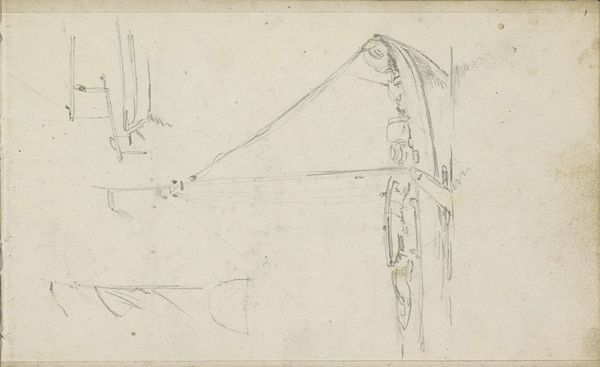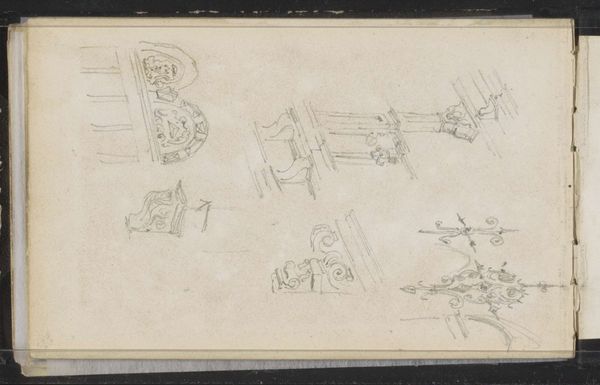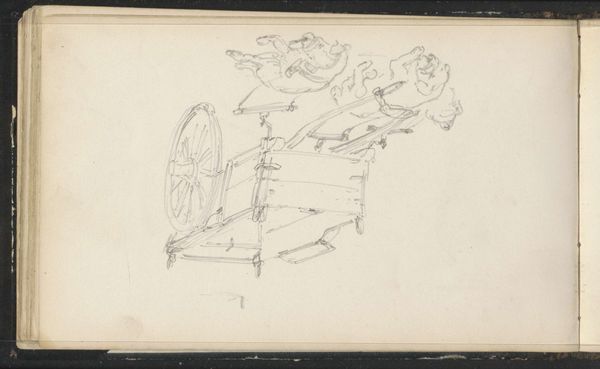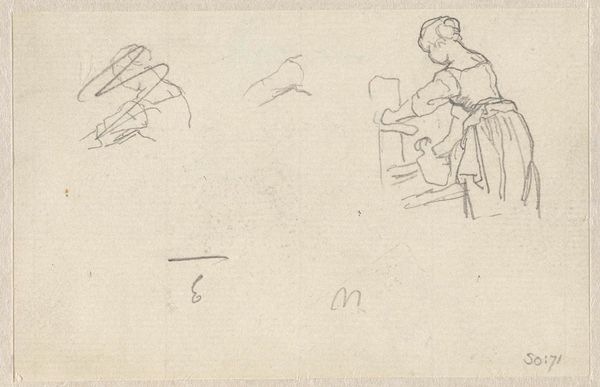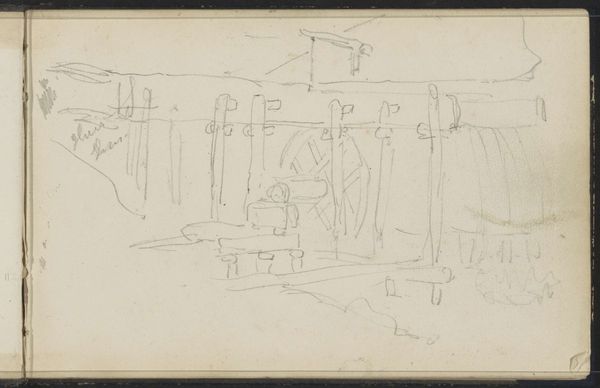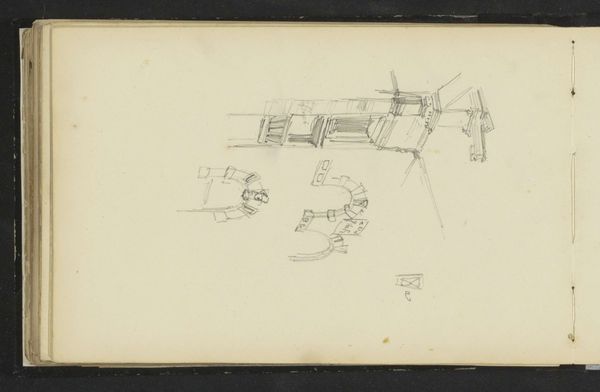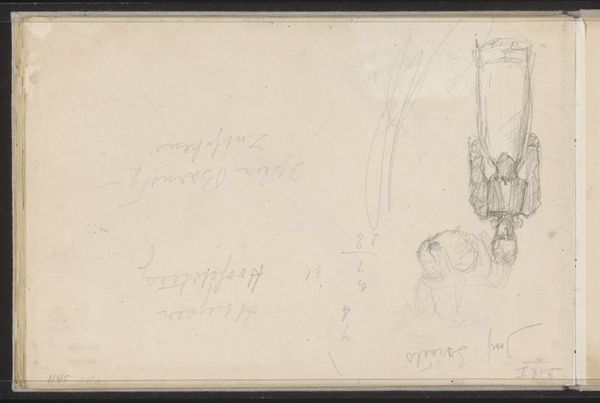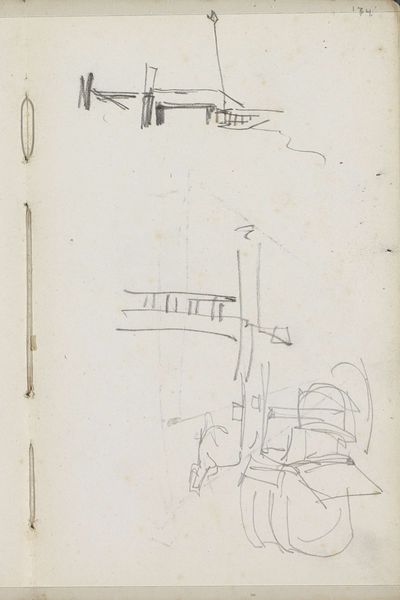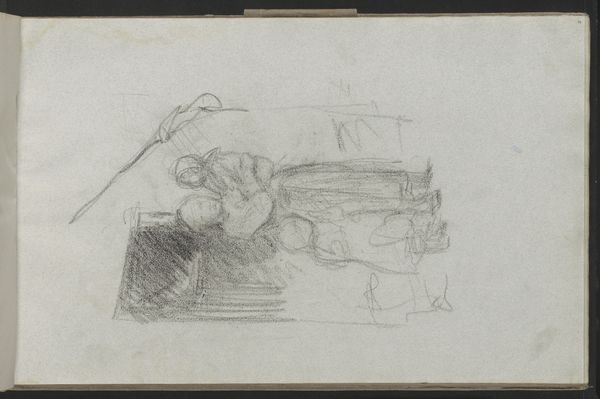
drawing, paper, pencil
#
portrait
#
drawing
#
pen sketch
#
landscape
#
paper
#
pencil
#
genre-painting
Copyright: Rijks Museum: Open Domain
This is a pencil drawing entitled ‘Paard-en-wagen en twee vrouwenhoofden’ [Horse and cart and two women's heads] by Cornelis Springer, made sometime in the 19th century. Here, Springer sketched a horse-drawn cart alongside studies of women. There’s a sense of everyday life in the Netherlands during the 1800s. The horse and cart were essential for trade and transportation while the women's headscarves indicate modesty. The Netherlands in the 19th century was undergoing significant social and economic changes. It was a time of industrialization, urbanization, and shifts in social structures. Artists like Springer captured the nuances of daily life amidst a changing society. Sketches like this offer insights into the visual culture of the time and provide a glimpse into the lives of ordinary people. To gain a deeper understanding of Springer's drawing, one could consult historical archives, social studies, and fashion history. Art offers us a window into the values, beliefs, and material conditions of its time.
Comments
No comments
Be the first to comment and join the conversation on the ultimate creative platform.

